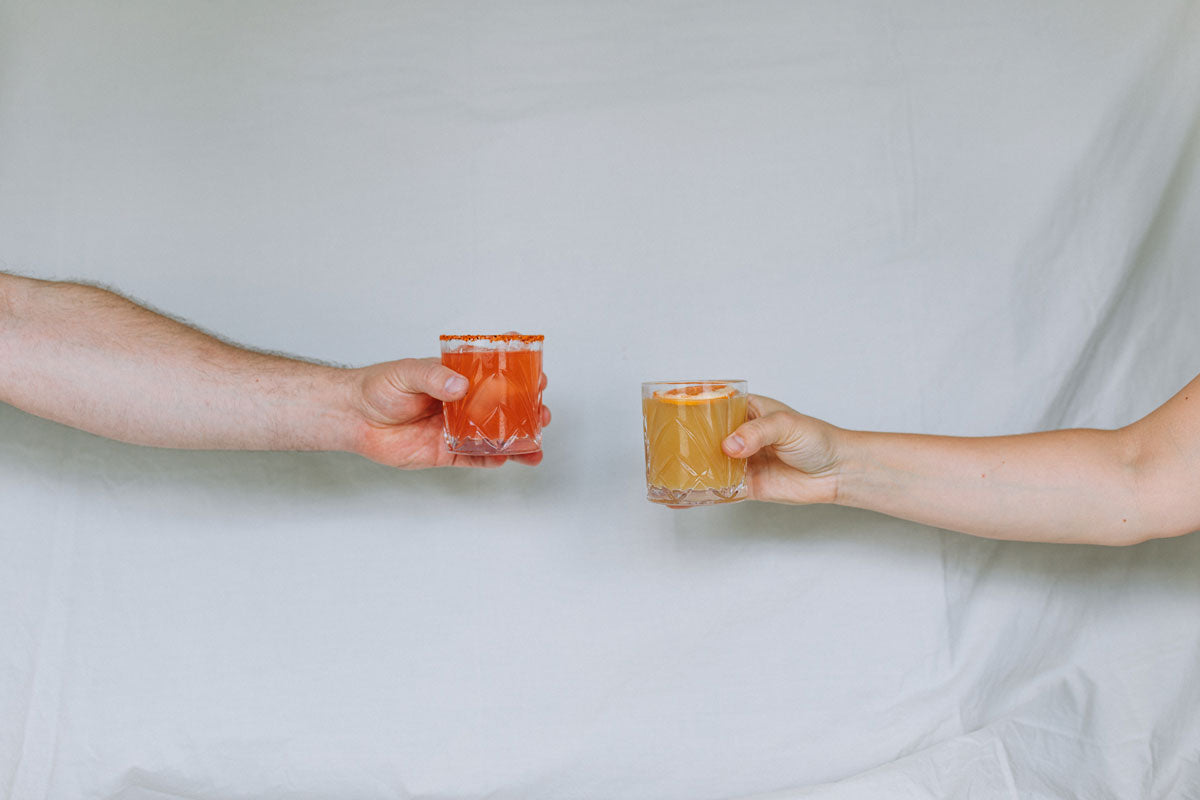Your Cart is Empty
We are on sabbatical— Contact us at hello@cocktailcommons.com for inquiries.
We are on sabbatical— Contact us at hello@cocktailcommons.com for inquiries.

This month is all about agave. Because we can’t think of a better way to stave off the summer swelter than with some distillate from one of our favorite succulents. Just let that sentence sink in for a minute...
OK — moving on. Let's dive right in...
The agave was considered a sacred plant with native Mexicans long before the Spanish arrived. Agave played an integral part in religious rituals, mythology and the economy. The heart of the agave plant is called the "piña". The pina was cooked and then the juice was extracted for fermentation. The origin of this drink has some mystery and myth behind it. The story goes that a lightning bolt struck an agave plant and cooked the pina. It then opened and released it’s juices. This story gave mezcal it’s nickname which is "elixir of the gods".
One thing that makes mezcal stand out is that there are fewer rules and regulations placed on distillers. Mezcal can be made from many species of agave. There are 200 different species of agave and roughly 30 of those are used for mezcal. Each species varies dramatically in size and flavor. Mezcal can also be produced anywhere in Mexico. Each region has their own techniques and traditions used for distillation which adds to the variety of mezcal. In contrast, tequila must be made from 1 species of agave and must be produced in Jalisco.
The process of producing mezcal is a labor of love. It is produced on a small scale in villages that have been using the same methods for centuries. The agave is typically harvested by hand. The plants can weigh up to 90lbs and take anywhere from 7 to 20 years to reach maturity.

Once the agave is harvested the leaves and roots are cut to expose the pina. The pina is then roasted in a pit dug into the ground and covered with hot stones. The pinas roast for about 3 days which is where the quintessential earthy-smokey flavor is imparted. After the roasting is complete the pinas are ground into a mash by a large stone wheel pulled by a horse. The mash is placed in a barrel with some water and left to ferment. Once the mash has fermented the liquid is separated and distilled. After distillation it is either left to age or bottled for consumption.
There are over 9,000 producers of mezcal in Mexico. Each one has their own story, traditions and processes which is what makes mezcal such a fascinating and enjoyable spirit.
We thought you'd never ask. This month's menu is all about mezcal so let's dive right in to see what's included when you order

Raspberry Cordial: Our homemade raspberry cordial brings all the tart, sweet and summertime flavor you could hope to have in a mezcal sour
Commons Orgeat: This essential ingredient adds body and a savory nutty note to your cocktails.
Cucumber Amaro: Our house made amaro is the perfect juxtaposition to the smokey mezcal and savory orgeat. Bitte, herbal, floral and fresh bring balance to your Flame.
Lime Concentrate: Just what you guessed. It’s lime. But it’s concentrated. Lime peels that have been macerated to extract the essential oils and then combined with lime juice and citric acid. Perfect to give all the lime essence without watering down your cocktail.
Two (2) Etched Rocks Glasses: These cut glass beauties are a staple for any home bar and will house your July cocktail in style. They boast a beautiful weight that will make you feel like you're drinking in luxury (and you are).
Dehydrated Blood Orange: A lovely garnish for your mezcal cocktail and an aromatic treat to enjoy while you sip to your heart's content
Tajin: To bring some savory spicy goodness to the rim of your sour.

How to measure ingredients: We will discuss why consistency is important to crafting cocktails and honing your skills.
How to properly use a cocktail shaker: learn how to shake a cocktail. We will also cover some alternative options for shaking if your shaker isn’t handy.
How to rim a glass: This simple procedure seems to trip up even the most experienced. We will cover the basics of how to get a perfectly rimmed glass.
How to Pair Citrus with spirit: Lemon? Lime? Which way should I go? We will cover the basics of how to make that call.
What is Tajin and all the who/when/where/why/how: tajin is a staple throughout most of mexico. We will discuss how it is used and how you can make your own.

This kit is for you! Perfectly refreshing with a few flavor profiles that will tickle the palate and sintillate the senses.
Comments will be approved before showing up.